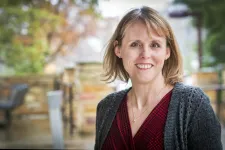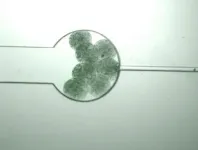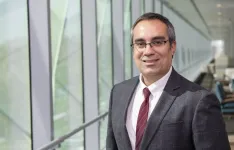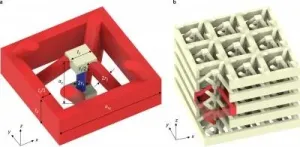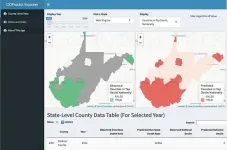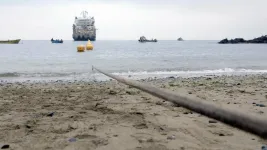Institutional environments trap disabled geoscientists between a rock and a workplace
2021-06-10
(Press-News.org) Inaccessible workplaces, normative departmental cultures and 'ableist' academic systems have all contributed to the continued underrepresentation and exclusion of disabled researchers in the Geosciences, according to an article published today (Thursday 8 June) in Nature Geosciences.
The article argues that changes to both working spaces and attitudes are urgently needed if institutions are to attract, safeguard and retain people with disabilities.
Anya Lawrence, a disabled early career researcher in the University of Birmingham's School of Geography, Earth and Environmental Science and author of the piece says:
"Disabled geoscientists like myself face barrier after barrier on a daily basis just to get by in academia. My aim, in writing this article, was to capture some of the shared difficulties that disabled geoscientists experience, particularly struggles that may be less obvious or less apparent at a surficial level, but are significant nonetheless. For example, I think it may come as a surprise to some that traditional workplace cultures like communal coffee breaks can actually be a source of exclusion for those with disabilities. Likewise, 'feeling sorry' and showing pity for disabled colleagues could seem well-meaning but just serves to reinforce negative stereotypes towards disability."
The article makes a series of suggestions about how those with disabilities can be attracted, supported and retained in academic geosciences such as university leaders taking advice from outside agencies with experience in embedding inclusion in the workplace, along with making visible commitments to disability-hiring initiatives.
Anya adds: "I think lots of examples of best practice are already out there in other sectors. It's a case of whether people across the various different levels of the academic hierarchy from those in the highest leadership roles to the academics 'on the ground' and doing the research in Geoscience departments, are committed to creating respectful cultures and welcoming spaces for disabled scholars."
"Although I have encountered many hurdles myself, I am very fortunate in that I have an amazingly supportive supervisor and head of school and also my parents who everyday face the challenge of caring for a disabled child with nothing but great courage and selflessness. I realise that so many disabled researchers just don't have this kind of close support network and are quite isolated and alone in academia."
Another potential initiative outlined in the article is increased collaborative research involving mixed groups of disabled and non-disabled geoscientists.
"Collaborating with other geoscientists without disabilities or with different disabilities to me has been really beneficial not only at a personal level but for the research itself," says Anya. "By working with people who have different opinions, life experiences and areas of expertise from myself I have learnt so much; I have been prompted to try new methods and analytical techniques, publish my findings in outlets I hadn't even heard of and think critically about my research at every stage of the process - all of which wouldn't have been possible had I kept going it alone."
"It's also just nice to feel included and valued- working with people who appreciate my involvement and view disability as being different, not deficient, means the world to me. To this end I would like to thank the editors of Nature Geoscience, especially Dr James Super and Dr Simon Harold for being sensitive and deeply respectful in their communication and, most of all, for inviting someone with lived experience of disability to contribute to the discussion on disability in the geosciences!"
INFORMATION:
Notes to editors:
The University of Birmingham is ranked amongst the world's top 100 institutions. Its work brings people from across the world to Birmingham, including researchers, teachers and more than 6,500 international students from over 150 countries.
ELSE PRESS RELEASES FROM THIS DATE:
2021-06-10
People who smoke, suffer from high blood pressure, obesity, or diabetes are not only at greater risk of suffering a stroke, heart attack, or dementia. For them, the risk of being affected by depressive mood or depression also increases. The more risk factors a person has, the more likely this is. Until now, however, it was unclear whether this probability also depends on their age. Earlier studies had already shown for other diseases such as dementia or stroke that a combination of several risk factors leads to a more frequent onset of the disease between the ages of 40 and 65 than in old age. Until now, however, it was unclear whether this also applies to depression.
Researchers ...
2021-06-10
MORGANTOWN, W. Va.-- Joining a club that sparks a new interest, playing a new intramural sport or finding a new group of friends may be just as indicative of a college freshman's loss of self-control as drinking or drug use, according to new research at West Virginia University.
Self-control--the ability to exercise personal restraint, inhibit impulsivity and make purposeful decisions--in that first year partly depends on a student's willingness to try new things, including things adults would call "good."
That's a new finding, according to Kristin Moilanen, associate professor of child development and family studies. The study, "Predictors of initial status and change in self-control during the college transition," observed 569 first year ...
2021-06-10
DURHAM, N.C. - Biomedical engineers at Duke University have demonstrated that a class of interwoven composite materials called semi-interpenetrating polymer networks (sIPNs) can be produced by living cells. The approach could make these versatile materials more biologically compatible for biomedical applications such as time-delayed drug delivery systems.
The research appears online on June 8 in the journal Nature Communications.
The concept of sIPNs has been around for more than 100 years and has been used in automotive parts, medical devices, molding compounds and engineering plastics. The general idea is for one or more polymers to assemble around another polymer scaffold in such a way that they become interlocked. Even though ...
2021-06-10
Humans expect that AI is Benevolent and trustworthy. A new study reveals that at the same time humans are unwilling to cooperate and compromise with machines. They even exploit them.
Picture yourself driving on a narrow road in the near future when suddenly another car emerges from a bend ahead. It is a self-driving car with no passengers inside. Will you push forth and assert your right of way, or give way to let it pass? At present, most of us behave kindly in such situations involving oth-er humans. Will we show that same kindness towards autonomous vehicles?
Using methods ...
2021-06-10
As COVID-19 restrictions ease nationwide and more people host indoor gatherings, investing in a high efficiency particulate air (HEPA) purifier might not be a bad idea, says a University of Cincinnati College of Medicine researcher.
Several published studies evaluating aerosols and submicron particles similar in size to the SARS-CoV-2 virion have shown that portable HEPA purifiers are able to significantly reduce airborne COVID-19 particles, says Ahmad Sedaghat, MD, PhD, director of the UC Division of Rhinology, Allergy and Anterior Skull Base Surgery.
Sedaghat identified the medical literature showing published studies on the effectiveness ...
2021-06-10
Acoustic waves in gases, liquids, and solids usually travel at an almost constant speed of sound. So-called rotons are an exception: their speed of sound changes significantly with the wavelength, and it is also possible that the waves travel backwards. Researchers at Karlsruhe Institute of Technology (KIT) are studying the possibilities of using rotons in artificial materials. These computer-designed metamaterials, produced by ultra-precise 3D laser printing, might be used in the future to manipulate or direct sound in ways that have never been possible before. A report on the researchers' work has been published in Nature Communications. (DOI: 10.1038/s41467-021-23574-2)
Rotons are quasiparticles, which means that they behave ...
2021-06-10
New Orleans, LA - Research conducted at LSU Health New Orleans Neuroscience Center of Excellence reports that Elovanoids, bioactive chemical messengers made from omega-3 very-long-chain polyunsaturated fatty acids discovered by the Bazan lab in 2017, may block the virus that causes COVID-19 from entering cells and protect the air cells (alveoli) of the lung. Their findings are published online in Scientific Reports, available here.
"Because the compounds are protective against damage in the brain and retina of the eye and the COVID-19 virus clearly damages the lung, ...
2021-06-10
Fraud is going uninvestigated by police who are "hiding behind the veil" of the Action Fraud national crime reporting agency.
In his paper published this week in Policing, Professor Mark Button, director of the Centre for Counter Fraud Studies at the University of Portsmouth argues that, Action Fraud, which has been widely derided, has become a useful veil from which the police can hide their inadequate response.
Figures from Action Fraud, the arm of the police responsible for recording scams and fraud, show that between 2019 and 2020, over 800,000 people reported being a victim of fraud, with £2.3bn finding its way into criminal hands. However, Professor Button calculated just 0.6 per cent of police officers ...
2021-06-10
For two decades, the number of Americans who die each year from drug overdoses has steadily risen, from less than 20,000 in 1999 to more than 80,000 in 2020. By studying patterns of these drug-related fatalities, researchers at University of California San Diego School of Medicine, San Diego State University (SDSU), and international collaborators have designed and validated a prediction model to signal counties at risk of future overdose death outbreaks. The goal of the open-source tool is to predict and prevent deaths through early deployment of public health resources.
Findings were published June 9, 2021 by Lancet Public Health.
"A big challenge for public health experts is figuring out which parts of the country are at greatest risk of ...
2021-06-10
WASHINGTON -- In a new study, researchers show that the fiber optic cables that carry data across the world's oceans can also be used to sense geophysical events and monitor ocean and seafloor conditions.
Although buoys and cabled observatories can be used to monitor parts of the ocean, the information they provide is limited to their immediate surroundings. The new approach could offer a way to use the global network of subsea fiber optic cables to study otherwise inaccessible parts of the ocean.
"Once perfected, this new technique will allow geophysical sensing in the ocean depths, which are largely unexplored because of a lack of instrumentation that works in this environment," said Zhongwen Zhan, assistant professor of geophysics at Caltech. ...
LAST 30 PRESS RELEASES:
[Press-News.org] Institutional environments trap disabled geoscientists between a rock and a workplace
